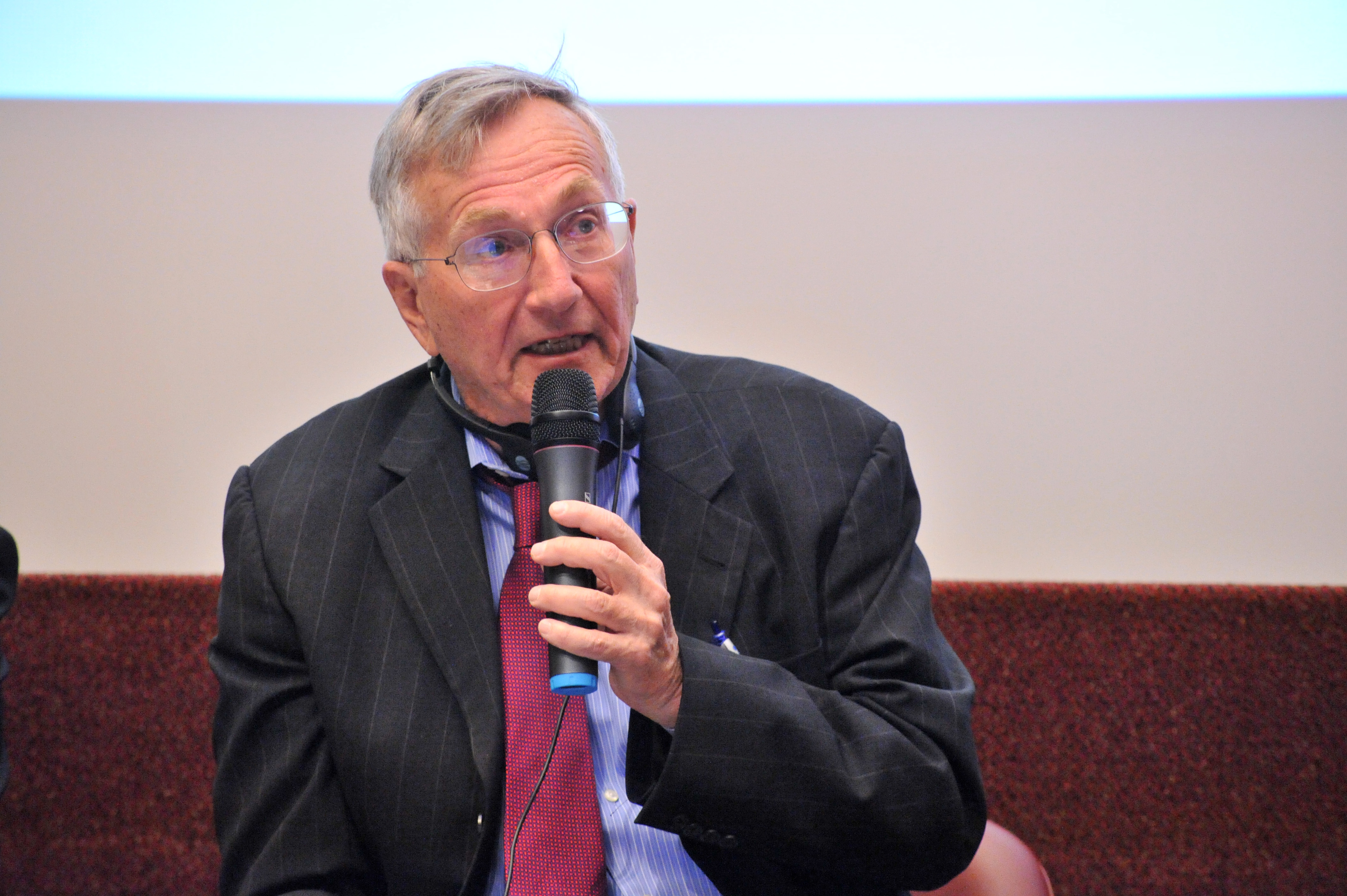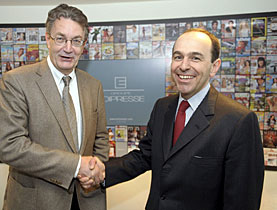Star hacks ponder future of journalism

Despite black clouds hanging over the newspaper industry, the future of journalism is bright, says award-winning US journalist Seymour Hersh.
The investigative reporter, who broke the Vietnam Mai Lai massacre and who has written extensively about Iraq and the Abu Ghraib prison scandal, is in Geneva this week attending the sixth Global Investigative Journalism Conference.
“The only way you can look at the future of journalism is optimistically,” Hersh told the audience on Friday during his keynote address.
“The newspaper industry is dying as we are talking, but the internet and other areas are expanding like crazy.”
Hersh took a swipe at certain “badly edited” blogs like the Huffington Post in the United States, but said the internet had basically “changed everything”, providing instant communication and creating smarter journalists.
“We’ll figure out a model for the internet to make investigative reporting not only possible, taking out the middlemen like publishers, but to also change the way things are reported,” he said.
The four-day annual conference opened on Thursday in the Swiss city attended by some 400 journalists.
The organisers let out a huge sigh of relief after concern they might have to cancel due to the Iceland volcano ash cloud over Europe. In the end only two workshops were cancelled, alongside a keynote speech by Spanish judge Baltazar Garzón.
Other notable speakers in Geneva include reporters Roberto Saviano, David Kaplan, Stephen Engelberg, Stephen Grey, Zhao Hejuan, Swiss senator Dick Marty and the director of the French “Le Canard enchaîné” satirical newspaper, Claude Angeli.
“Even a volcano can’t stop investigative journalism,” joked Swiss TV producer and conference organiser, Jean-Philippe Ceppi.
Over the four days 100 presentations are planned on a wide range of topics from Somali piracy to the UBS scandal, as well as practical tips for reporters.
Stop navel-gazing
Ceppi agreed that concerns about the future of journalism were largely unfounded, influenced by Western navel-gazing.
“Our outlook is too focused on Europe, the US and Western countries,” he told swissinfo.ch.
“But we have panellists from India, Indonesia, Latin America and China, where they sell millions of publications every day, and where the added-value is investigative reporting.”
The “Temps Present” producer said in these countries investigative reporters were highly respected heroes seen as serving emerging democracies.
Small independent television companies producing investigative reports, intelligence reports like Africa Confidential and transnational investigations such as on the Trafigura waste scandal were also proof of successful models that work during tough times, he added.
Funding problems
But New York Times reporter and 2009 Pulitzer Prize winner David Barstow was less upbeat.
“We were all hoping that citizen journalism would step in to fill the vacuum, but it’s not happening – apart from a few isolated cases,” he said. “Very few citizen journalists or bloggers can put in the resources, and for difficult stories there is no way I could dream of doing them without the full backing of the New York Times and my editors.”
Barstow is part of a team of 12 reporters at the paper who work on longer investigations, which can cost from $100,000 (SFr107,000) up to $1 million. He received the Pulitzer Prize last year for exposing a Pentagon campaign to use retired military officers, working as analysts for major US television and radio networks, to reiterate the government line on the war on terror.
Myret Zaki, author of Swiss bestsellers on the UBS scandal and banking secrecy, agreed that in-depth reporting was hampered by the lack of time and financial backing.
“You have to be rich,” she said. “I took a three-month sabbatical from my job to write the last book but it was a race against the clock and I had to return to work. But I didn’t do it for the money. I did it as I wanted to tell this story.”
While collaborations between reporters and the rise in the number of applications at US journalism schools were positive developments, they did not make up for the tens of thousands of reporters that have been lost, Barstow said.
Journalists’ muscles were weak, he said, just when they were most needed to take on power being concentrated in government, the financial sector, healthcare and the internet, as well as tougher PR spin.
Simon Bradley in Geneva, swissinfo.ch
The Sixth Global Investigative Journalism Conference is taking place in Geneva from April 22-25.
The conference brings together some 400 journalists from around the world. Keynote speakers include Roberto Saviano, the Italian journalist who wrote the book “Gomorrah” about the Italian mafia and Seymour Hersh, who broke the My Lai US army-Vietnam scandal and who has written extensively on Iraq and Abu Ghraib prison.
This year’s programme includes a wide range of topics such as investigating undercover, Somali piracy, war consulting, terrorism, Russian oligarchs, the UBS scandal, climate change lobbyists, war reporting, corruption in football, gangs, the Trafigura waste scandal, human trafficking, new journalism business models, as well as more practical help for journalists.
The aim of the annual conference is for investigative journalists from around the world to exchange, ideas, experiences, tips and professional practice.
The idea to establish an investigative reporters’ network was conceived in 1975 by a group of US journalists. They formed the Investigative Reporters and Editors (IRE). In 2001 a similar group, DICAR, composed of Danish journalists, and IRE organised the first global conference of such investigative journalists in Copenhagen, Denmark.
Previous conferences: Copenhagen (2001 and 2003), Amsterdam (2005), Toronto (2007) and Lillehammer (2008). Next year’s event will be in Kiev, Ukraine.
Switzerland has around 44 newspapers per million inhabitants, compared with 23 in Germany, 21 in Britain, and two in France and Italy.
Circulation of paid-for newspapers doubled from 1930-1985, stabilised and then dropped from 2005.
Free daily newspapers came out after 2000. They are read by 30% of the population over the age of 14.
The main private press groups are Ringier (based in Zofingen), Tamedia (Zurich), Edipresse (Lausanne) et NZZ (Zurich).

In compliance with the JTI standards
More: SWI swissinfo.ch certified by the Journalism Trust Initiative





You can find an overview of ongoing debates with our journalists here. Please join us!
If you want to start a conversation about a topic raised in this article or want to report factual errors, email us at english@swissinfo.ch.